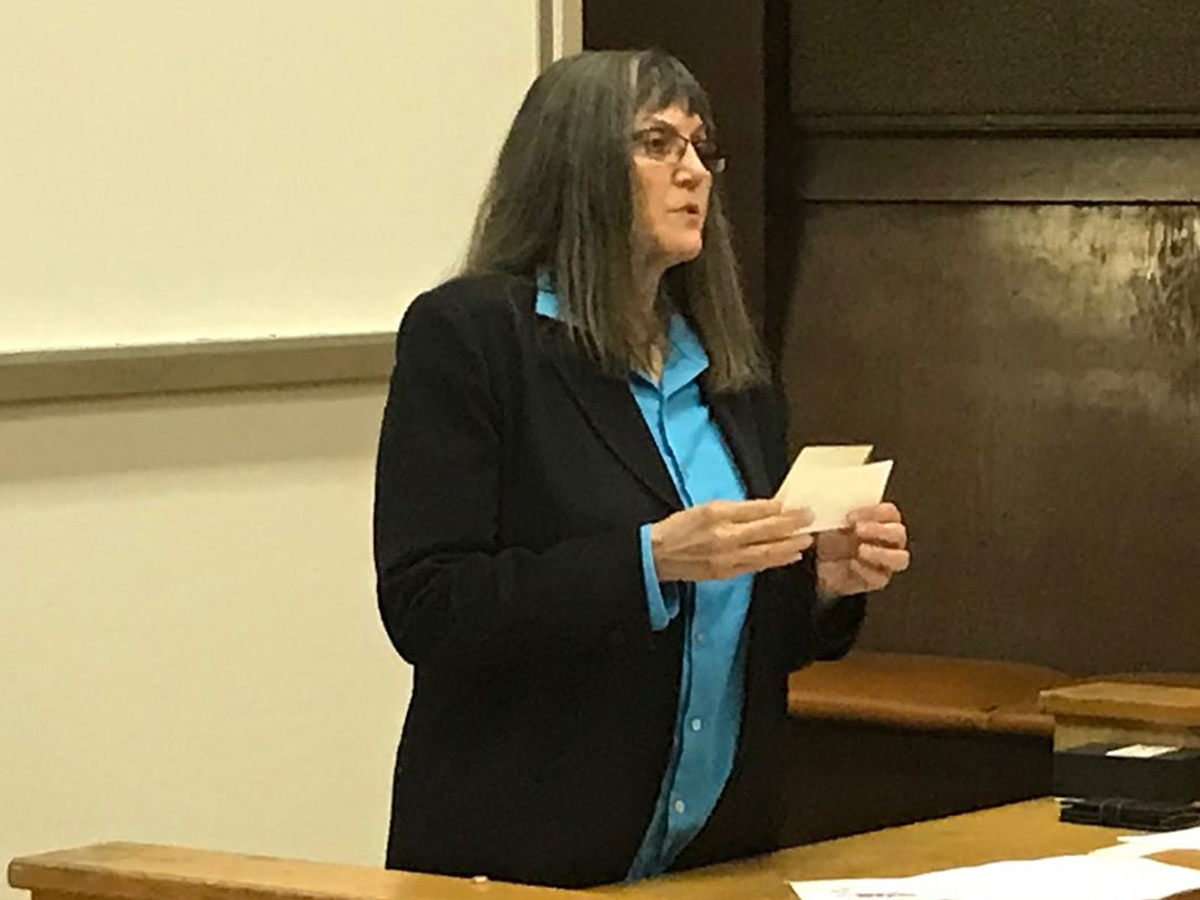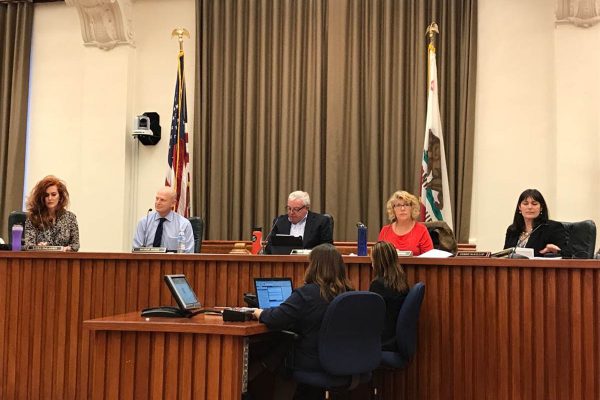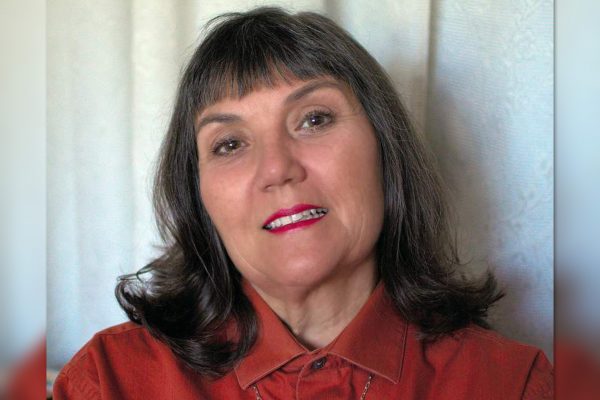MARTINEZ, Calif. – Speaking to about 40 Martinez residents Wednesday, an educator and activist with California Common Cause said the city’s voting districts should be drawn by a citizens’ commission rather than the Council’s politicians.
Helen Grieco addressed those attending a meeting of The Thousand Friends of Martinez, a citizens group that is advocating for an independent redistricting commission to draw those districts once numbers from the 2020 United States Census.
While a state-appointed independent commission drew new California districts for state and federal positions after the 2010 census, Senate Bill 139, introduced Jan. 17, 2019, would authorize local agencies to do the same.
These would include counties, general law cities, school and community college districts and special districts, which could establish independent or advisory redistricting commission either to recommend changes or make those changes themselves regarding the district boundaries of their legislative bodies.
It would require a county with more than 250,000 to organize redistricting commissions that would draw supervisors’ districts, give those commissions funding and supply them with staff. The state would be required to reimburse the local governments for California-mandated expenses.
Should that bill pass, attention next would go to requiring the same type of commissions for cities, Grieco said.
Regardless of legislation, Martinez could put its own commission in place in time to draw Council maps once the next census has determined how many people live within the city limits, she said.
She urged audience members to visit Common Cause’s website, www.commoncause.org, as well as www.localdistricting.org, a Martinez-specific page, https://www.commoncause.org/california/our-work/ensure-fair-districts-reflective-democracy/local-redistricting/martinez/.
While Grieco said Common Cause would be ready to help citizens move in that direction, she said it could not advocate for any proposed ordinance that would be put before the Council, even if it was written based on information her organization provides.
That’s because Common Cause does not take political sides, she claimed.
However, she repeated several times Wednesday night that “voters should pick their elected officials; elected officials don’t pick their voters.”
But she said the way Martinez City Council’s design for its voting districts looked like incumbent retention was the goal.
The districts were drawn to prevent any Councilmember from losing a seat on the panel and from having to compete with each other in a single district, after the city’s consultants said the will of the people, expressed in electing those on the Council, should be respected.
“Independent districting is not about incumbents,” Grieco said.
Nor is it about establishing districts that would give a particular minority a stronger voice, she said as she listed the principles that should be followed in establishing election divisions. Race wasn’t one, she noted.
However, Malibu attorney Kevin Shenkman, whose demand letters said he was representing activists in San Antonio, Texas, accused both Martinez and the Martinez Unified School District of diluting protected groups’ votes in violation of the California Voting Rights Act. He mentioned Martinez Hispanics in particular.
He accused the city and school district of having racist attitudes, which the Council, city staff and school district administrators and the Board of Education vehemently denied.
Nor did the city’s consultants find any Hispanic “enclave” in Martinez that could become a district, with the exception of those living in a cluster of four houses.
As it worked to put districts in place by the 90-day deadline, the Council told its demographic and map-drawing consultants to create long, narrow districts that as much as possible stretched from the waterfront to areas south of California Highway 4. That way, each Councilmember would represent a miniature version of the city, they said at the time.
That approach failed to follow natural boundaries or create districts formed around areas of common interest, Grieco said. She said it contributed to the Contra Costa County Elections Office telling many residents last year that they no longer had a physical polling place and would be voting by mail instead.
Grieco said Martinez has found itself in an unusual position.
After Shenkman sent Martinez a demand letter late in 2017 accusing the city of violating the state voting rights act (CVRA) and threatening legal action if it didn’t switch from at-large voting to by-district elections, the Council reluctantly underwent the lengthy public process to make the change.
The city conducted multiple public hearings as required by the state before adopting districts in time to be used in the 2018 election.
“You’re the first city to be told to draw lines and you did such a terrible job that you’re on your second lawsuit,” she said. Shenkman is representing two residents, Felix Sanchez and Nancy Noonan in a suit against the current district maps.
A Thousand Friends member, Dan Barrow, pointed out that even though Councilmembers have been placed in individual districts, most live in the downtown core.
“If you had one downtown district, only one could keep the job,” he said. Criticizing the city’s districts, he said some boundaries went down streets, splitting neighborhoods. “They have nothing in common? This is so blatant.”
He described how Antioch had created a downtown district and the others with boundaries in certain neighborhood areas.
Grieco pointed to a map of Antioch’s blocky voting areas. “That’s how voting districts are supposed to look,” she said, adding that a citizens’ commission would do a better job.
Finding those willing to sit on a commission isn’t difficult, she said. After Proposition 11 established a citizens’ panel to draw state Assembly and Senate district lines, 33,000 applied, she said. Members are well-vetted, and must not have been elected to office in the previous four years and must refrain from doing so four years after the commission completes its work, she said.
She called the commission approach more transparent, since maps are drawn by the panel in public view. However, the state also required the Council to slate several public hearings as it crafted its first district maps, and revisions and final adoption also were done at public meetings.
Redistricting wouldn’t address one question raised by an audience member who said she lived in unincorporated Contra Costa County but near Martinez. She still would be unable to vote in city elections, Grieco said.
Nor does redistricting mean Martinez’s mayor necessarily would be changed from an elected to a rotating position, she said.
During the city’s adoption of maps, some residents urged the Council to end the elected mayor position. But the panel resisted; members reminded their audience that Martinez citizens twice voted in favor of an independent mayor elected by at-large votes.
That’s still an option, she said, although more Council districts could be created, including a special one for mayor.
Another resident that some who live in Martinez don’t feel connected, such as those whose children attend Mount Diablo Unified School District schools. “The fathers work outside Martinez. They never go to Council meetings. They don’t care,” she said.
No member of the Council attended Wednesday’s meeting. Instead, the Council was at Martinez City Hall, starting a series of budget and Strategic Plan meetings leading up to the adoption of a two-year budget.
While Grieco was speaking to the Thousand Friends, a political action group, she said moving toward a redistricting commission must come from more than one organization.
Commission members would have access to demographic details, because to comply with state and federal laws, districts must be nearly identical in population size. Grieco said some cities made programs available online citizens used to craft legal maps for submission.
While Common Cause won’t advocate, it has educational materials, including a sample ordinance, that residents can use in approaching the Council to establish the commission. Should the Council be unwilling to do so, she said, citizens could demand a ballot measure.
She described how Common Cause has assisted in such cities as Berkeley and Menlo Park.
“I think this is a no-brainer,” she said.
A second meeting on forming an independent redistricting commission will take place at 7 p.m. April 23; the site of the meeting will be announced later.




